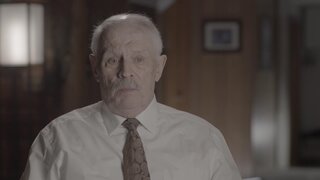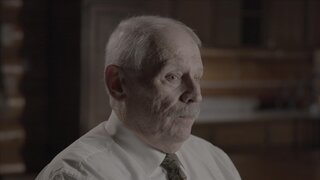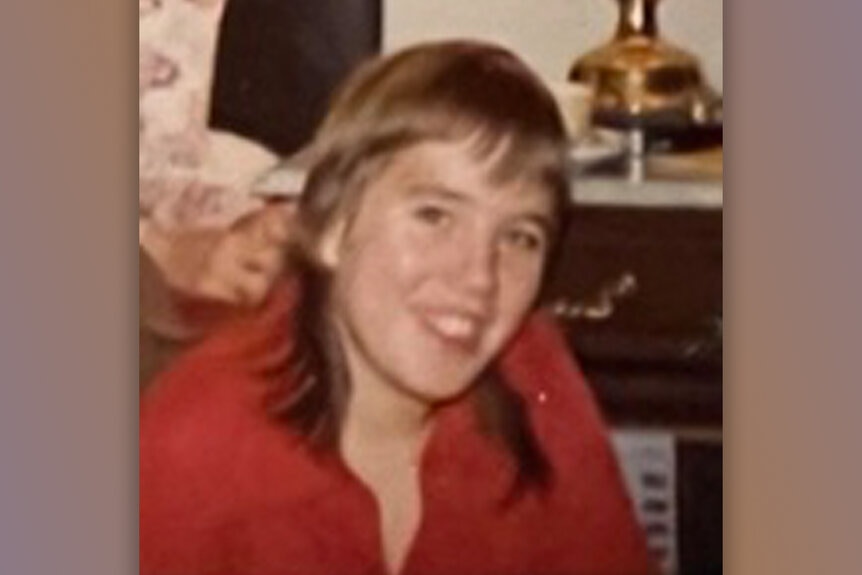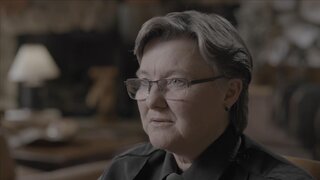Create a free profile to get unlimited access to exclusive videos, breaking news, sweepstakes, and more!
Alleged North Pole Serial Killer Strangled and Shot 4 Young Women and 1 Girl
The search for the killer of young women in North Pole, Alaska, leads investigators to the local air force base.
In October 1979, hunters in the remote town of Moose Creek, Alaska, stumbled upon the body of a young woman in the snow.
“There was significant trauma to her face,” Sgt. Samuel Barnard, of the Alaska State Troopers, told Buried in the Backyard, airing Saturdays at 8/7c on Oxygen.
“There was evidence of strangulation,” he said, “and that she was shot in the head.”
Situated some 20 miles south of Fairbanks, Moose Creek is near North Pole, which is home to the Santa Claus House. Also nearby is Eielson Air Force Base.
Glinda Sodemann Is Killer's First Victim
The victim was identified as 19-year-old Glinda Sodemann, the wife of airman Jerry Sodemann. The couple had an 18-month-old daughter. In August, Jerry returned home from the base. The baby was in her crib, but Glinda had gone missing.
Detectives began by interviewing Jerry Sodemann. He said that the couple had no problems. But “his actions and attitude made us a little bit suspicious,” said Barnard.
RELATED: Elderly California Man Strangled and Found Buried Inside a Giant Concrete Egg
Jerry agreed to take a polygraph test, which he failed. “I put him as suspect number one,” said Sgt. Jim McCann, of the Alaska State Troopers. “There was just no hard evidence connecting Jerry to Glinda’s disappearance. We searched for a month but we couldn’t find her.”
Then in October, rabbit hunters found her buried in the snow in the woods Creek area, about eight miles south of North Pole. At the crime scene a 38-caliber bullet was collected.
A forensic pathologist confirmed that she had been strangled and shot in the forehead. There was no sign of a sexual assault.
11-year-old Doris Oehring Vanishes
As detectives worked the case, another tragedy struck. On June 13, 1980, 11-year-old Doris Oehring went missing while out riding her bike. Investigators had no idea if the case was related to Glinda Sodemann.
“It was every parent’s nightmare,” said Debbie Carter, a reporter for Fairbanks News-Miner.
Oerhing’s brother told investigators that days before his sister went missing he was riding his bike and had seen her talking to a man in a blue car. The man had a GI-style haircut and was wearing a military type uniform, said McCann.
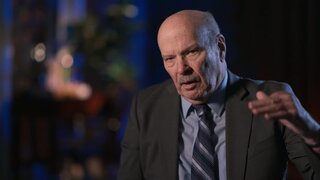
That description could fit any number of Air Force personnel in the area. Airmen Jerry Sodemann didn’t own a blue car, but lived in the area where the victims went missing.
With suspicion hanging over Sodemann, he was given another polygraph exam — this time by an expert in the field.
“The polygraph operator said ‘This guy’s got a random heart murmur and he'll never be able to pass any polygraph test,’” said Barnard.
With no evidence linking him to the murder, Sodemann was cleared. Investigators had no suspect in Glinda Sodemann’s murder or Doris Oerhing’s disappearance.
Bodies of Two Young Women, and a Teen Turn Up
Over the next year, the bodies of young women were found in the area of Eielson Air Force Base.
On March 3, 1981, Marlene Peters, 21, was found, and five days later, Wendy Wilson, 16. In September, Lori King, 18, was discovered. They had all been killed the same way.
“This person would strangle them first and then he would shoot them in the face,” said McCann.
Fear spread throughout the area. Investigators believed the killer was an airman and staked out the base.
They also sought the help of FBI profilers at Quantico, who came up with a profile for a white male between 18 and 35 years old, likely single with no children, and no steady job. Per the profile, he was not a military man, said Barnard.
The profile threw investigators off. They’d been looking for an airman. After Quantico, detectives did a DMV search that didn’t turn up any leads.
Detectives spoke with the Office of Special Investigations at the base to find out if any airman had exhibited negative behavior toward women.
Airman Thomas Richard Bunday on Investigators' Radar
Two of the three men whose names came up were ready to do whatever they needed to do to aid the investigation. But the third man, Thomas Richard Bunday, was uncooperative.
Investigators focused on Bunday, who was married with two children and taught electronics on the base. He didn’t fit the FBI profile, but he drove a blue car, a vehicle Doris Oehring's brother had seen just before she disappeared.
Two years passed with no more murders. Investigators believed the killer had died or moved away. Detectives compiled photos of airmen who’d transferred. Doris Oehring’s brother reviewed them and immediately picked out Bunday.
“We thought he might have been the murderer, but we didn't have physical evidence,” said Barnard. “So we needed a confession.”
Bunday had transferred to Sheppard Air Force Base in Wichita Falls, Texas, to be an instructor.
In March 1988, investigators went to Texas and questioned Bunday in a series of meetings. At the advice of FBI behavioral science experts, they posted pictures of the murder victims, along with pictures of him and his vehicle in the interview room.
RELATED: Single Dad Lured To Texas Desert Was Beaten and Buried Alive: "That's Pure Evil"
They had a covert reel-to-reel recording every word.
McCann approached Bunday calmly, as if he were a friend. “I said, ‘So where do you come from? Were you a good kid?’ He goes, ‘Well, I'd get into some trouble. I liked to throw gas on cats and light them on fire.’ That’s something pretty evil that a lot of serial murderers do.”
Investigators carefully navigated the interviews in hopes of getting a confession. But on day four, Bunday handed McCann a note. “I really liked you guys and I’ve enjoyed talking with you,” it read. “But I didn't do these things.”
At this point, investigators got a warrant to search Bunday’s residence. They collected evidence, including ammunition and hairs from his vehicle.
“When we left, he said ‘I’m gonna come by and see you tomorrow.’ We just flexed our muscles … and it worked,” said McCann.
Thomas Richard Bunday Admits Guilt
The next morning Bunday told investigators that Doris Oehring’s body was on the base in Alaska. “He said when he took her through the security gate, she was already dead,” said McCann.
Bunday admitted that he had strangled and shot her — and that he killed the other four victims the same way. Because they lacked jurisdiction in Texas, the Alaska detectives could not arrest Bunday until they obtained a warrant.
In the meantime, Bunday was on his motorcycle when he fatally slammed into a truck. “It wasn’t an accident,” said McCann.
It was later confirmed that hairs collected from Bunday’s vehicle were Wendy Wilson’s. Ballistics tied the bullets collected to ones recovered from the victims.
In August 1986, Doris Oerhing’s skull was found in a remote section of Eielson Air Force Base not far from where Bunday said it would be.
To learn more about the case, watch Buried in the Backyard, airing Saturdays at 8/7c on Oxygen.


